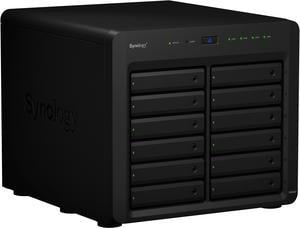
- Form Factor: 12-Bay
- Supported Protocols: SMB, AFP, NFS, FTP, WebDAV, CalDAV, iSCSI, Telnet, SSH, SNMP, and VPN (PPTP, OpenVPN, L2TP).
- Processor: AMD Ryzen V1500B 4-core 2.2 GHz
- Installed Memory: 4GB DDR4
- Model #: DS2422+
- Item #: N82E16822108790
- Return Policy: Manufacturer Only Return Policy
Drive trays are identical to other Plus-series DiskStations, making it very quick to move drives between units Good support for migrating arrays DiskStation OS is pretty easy to use Synology's proprietary RAID modes are easier to expand and make better use of disks with varying capacities, compared to traditional RAID modes

- Form Factor: All Flash 4-Bay
- Port RJ-45: 1 x 10GbE
- HDD Interface: 4 x M.2 (4 x Bay)
- Operating System: UGOS Pro
- Model #: DXP480T Plus
- Item #: 9SIA2W0KEN9414
- Return Policy: View Return Policy
Decent price for the hardware, sleek design, upgradable RAM, software updates are frequent, drive bays are solid, can control fan speed for the CPU

- Type: Accessory
- Model #: E10M20-T1
- Item #: 9SIAFJ8KDW6229
- Return Policy: View Return Policy
- M.2SSD and 10GBE in one card - Performance - Ease of installation - Heat sink
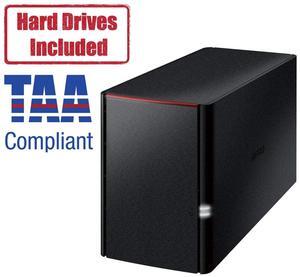
- Form Factor: 2-Bay
- Port RJ-45: 1 x 10/100/1000M
- Port USB: 1 x USB2.0
- HDD Interface: 2 x SATA (2 x Bay)
- Model #: LS220D0802
- Item #: N82E16822165598
- Return Policy: 30-Day Return Policy
Already transferred my backups from my older NAS, now I can repartition my old NAS so that it sees the additional drive space that I added to it long ago, that it never saw, nor was my old NAS even capable of partition expansion.
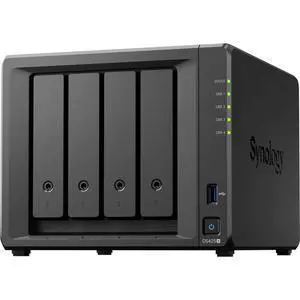
- Brand: Synology
- Included HDD Capacity: Diskless System
- Form Factor: 4-bay;2GB DDR4 non-ECC
- HDD Interface: 4 x SATA (4 x Bay)
- Model #: DS425+
- Item #: N82E16822108849
- Return Policy: 30-Day Return Policy
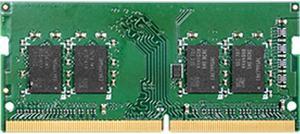
- Type: Accessory
- Model #: D4NESO-2666-4G
- Item #: 9SIAFJ8KEU6281
- Return Policy: View Return Policy
Happy to have 6 gb total all working ; didnt want to take a risk to go above 6 gb that isnt on the compatibility list
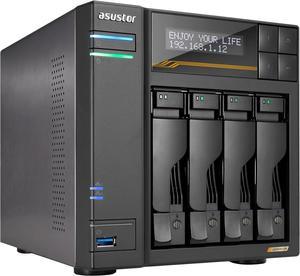
- Form Factor: 4Bay SATA HDD + 4*M.2 SSD
- Port RJ-45: 2 x 2.5 GbE
- Port USB: 2x USB4+3x USB 3.2 Gen 2 Type-A
- HDD Interface: 4 x SATA (4 x Bay)
- Model #: AS6804T
- Item #: 9SIA2W0KBR2061
- Return Policy: View Return Policy
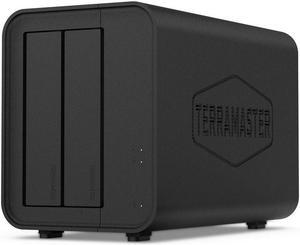
- Form Factor: 2-Bay
- Port RJ-45: 2 x 2.5 GbE
- Port USB: USB 3.2 (10Gbps) x 2
- HDD Interface: 2 x SATA (2 x Bay)
- Model #: F2-424
- Item #: 9SIAA3NK8D2721
- Return Policy: View Return Policy

- Form Factor: 4-Bay
- Processor: AMD Ryzen R1600 2-core 2.6 (base) / 3.1 (turbo) GHz
- Installed Memory: 2GB DDR4 ECC
- RAID: Synology Hybrid RAID, Basic, JBOD, RAID 0, RAID 1, RAID 5, RAID 6, and RAID 10
- Model #: RS422+
- Item #: 9SIAFJ8KDW6313
- Return Policy: View Return Policy
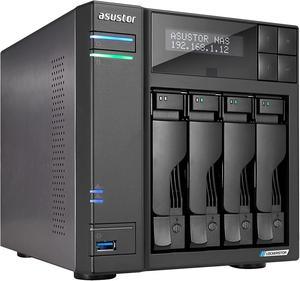
- Form Factor: 4-Bay
- Port RJ-45: 2 x 2.5 GbE
- Port USB: 2x USB 3.2 Gen 2x1
- HDD Interface: 4 x SATA (4 x Bay)
- Model #: AS6704T
- Item #: 9SIA2W0JGM8830
- Return Policy: View Return Policy
Very fast Robust with lots of options

- Form Factor: 8-Bay
- Processor: AMD Ryzen V1500B quad-core 2.2 GHz
- Installed Memory: 4GB DDR4
- RAID: RAID 0, 1, 5, 6, 10, JBOD, Basic, Synology Hybrid RAID (SHR)
- Model #: RS1221+
- Item #: 9SIAMNEHUC8098
- Return Policy: View Return Policy
- Rackmount - Minimal dept (works with shallow racks) - Good cooling - Possibility of 2 PSU - Possibility of extra disks units *. - SSH is available for advanced system admin**. *Read well on Synology website if you are planning to use it. ** DSM is NOT a regular linux release, so make SURE you know what you are doing. Refer to the documentation and community forum to learn more.

- Form Factor: 1-Bay
- Port RJ-45: 1 x 10/100/1000M
- Port USB: 1 x USB2.0
- HDD Interface: 1 x SATA (1 x Bay)
- Model #: LS210D0201
- Item #: 9SIAFJ86WS7350
- Return Policy: View Return Policy
Perfect for me - just wanted a simple NAS for data backups. I plugged it in and in 1 minute it was booted and on-line taking on data. Didn't have to touch a thing. I didn't install the Navigator. The web-based settings interface is easy to use and everything it does seems to be perfectly clear. I did turn on the DLNA service - yes it instantly shows up as a source on my "smart" BluRay player.

- Form Factor: 12-Bay
- HDD Interface: 192 TB (16 TB drive x 12) (Capacity may vary by RAID types)
- Power: Power Supply Unit / Adapter: 550W AC Input Power Voltage: 100V to 240V AC Power Frequency: 50/60 Hz, Single Phase Power Consumption: 51.23W (Access), 21.71W (HDD Hibernation)
- Type: Desktop NAS
- Model #: DX1215II
- Item #: 9SIAFJ8KDW6286
- Return Policy: View Return Policy
This was ridiculously easy to set up. Just install the drives in the screw-less carriers, plug them into the chassis, connect the eSATA cable and power up. The system sees all the new drives and displays the expansion chassis and drives in the GUI. Then you just choose how you want it setup (RAID5, RAID6 etc.) and the system does the rest. It builds the RAID and optimizes the RAID and filesystem. If you have SSD cache you can even split it between the main chassis array and the expansion array. I had two each 1TB SSDs (too large) and spilt the capacity between the two volumes. Once the RAID was complete I ran ATTO benchmarks on the both volumes and witnessed almost identical performance to both volumes. No performance penalty on the expansion chassis whatsoever. Also, the drives ran cool during all functions. I saw a maximum of 102 degrees F . I was concerned about the performance of the expansion chassis but no need for the concern. You can simply expand your primary volume across the two chassis but I would not recommend that. Separate volumes on each chassis is safer. I would recommend this expansion chassis to anyone wanting to expand their storage with a Synology NAS that supports the expansion chassis. It just works like it should and you can manage all your NAS storage through a single interface. I have the primary NAS connected via a bonded pair of GigE and can saturate both links and see around 220 MB/sec read or write sustained.
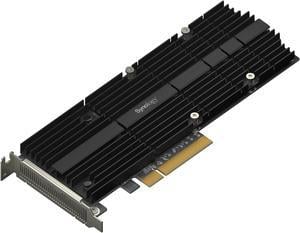
- Type: Accessory
- Model #: M2D20
- Item #: 9SIAFJ8KDW6232
- Return Policy: View Return Policy
Quick and easy install Converts M.2 for usage for Synology without NVME slots.
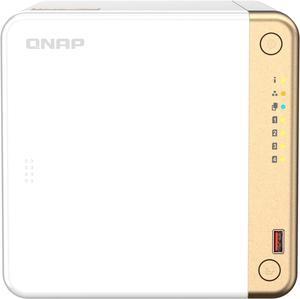
- Form Factor: 4-Bay
- Port RJ-45: 1 x 2.5GbE
- Port USB: Multiple USB 3.2 Gen 2 ports (type-A)
- HDD Interface: 4 x SATA (4 x Bay)
- Model #: TS-462-4G-US
- Item #: 9SIAFJ8KDW6050
- Return Policy: View Return Policy
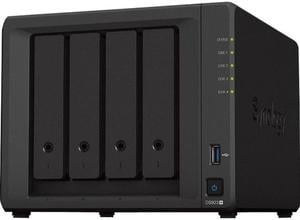
- Form Factor: 4-Bay; 4GB DDR4
- Supported Protocols: SMB/AFP/NFS/FTP/WebDAV/SMB1 (CIFS), SMB2, SMB3, NFSv3, NFSv4, NFSv4.1, NFS Kerberized sessions, iSCSI, HTTP, HTTPs, FTP, SNMP, LDAP, CalDAV
- Processor: AMD Ryzen R1600 2-core 2.6 (base) / 3.1 (turbo) GHz
- Installed Memory: 4 GB DDR4 ECC
- Model #: DS923+
- Item #: 9SIAEYJKA20082
- Return Policy: View Return Policy
- Well packaged and worked perfectly - Easy to setup - Added some really nice WD 2TB Red Pros NAS drives - Joined to AD domain with no issue

- Form Factor: 1-Bay
- Port USB: 1 x USB3.2
- Processor: ARM
- Installed Memory: 1GB DDR4
- Model #: CD3510-US-BK-BP-1
- Item #: 9SIA1DSKFY8981
- Return Policy: View Return Policy
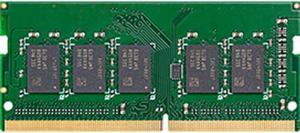
- Type: Accessory
- Model #: D4ES01-16G
- Item #: N82E16822108796
- Return Policy: 30-Day Return Policy
Easy to install.
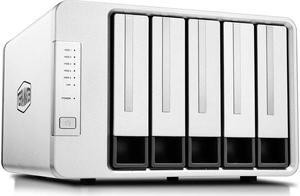
- Form Factor: 5-Bay
- Port USB: 2 x USB3.0
- HDD Interface: 5 x SATA (5 x Bay)
- Processor: Intel Celeron J3355, Dual Core 2.0GHz (Max burst up to 2.5GHz)
- Model #: F5-221
- Item #: 9SIAA3N8HT1227
- Return Policy: View Return Policy
Arrived within days of ordering. Setup was simple Added the drives and setup Raid 5. Added another drive without issue. Most affordable I found on the market.

- Form Factor: 4-Bay
- Processor: AMD Ryzen V1500B quad-core (8-thread) 2.2 GHz
- Installed Memory: 2GB DDR4 ECC SODIMM
- RAID: Synology Hybrid RAID (SHR), Basic, JBOD, RAID 0, RAID 1, RAID 5, RAID 6, and RAID 10
- Model #: RS822RP+
- Item #: N82E16822108815
- Return Policy: 30-Day Return Policy